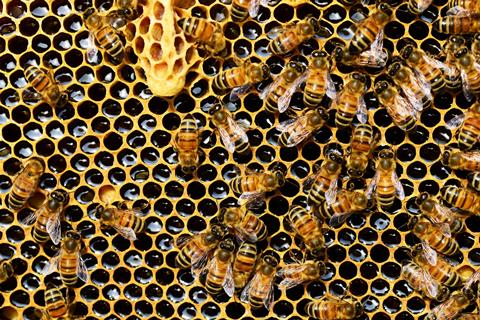Antibiotic resistance isn’t just a hospital problem—it’s a growing threat on the farm, too. From poultry barns to dairy sheds, the overuse of antibiotics in agriculture has given rise to “superbugs” that endanger animals, crops, and even human health. But what if the solution has been buzzing and hopping around us all along?

In a new study led by Bar Maron, a joint PhD student, in collaboration with Prof. Jonathan Friedman and Prof. Zvi Hayouka from the Faculty of Agriculture, Food and Environment at the Hebrew University of Jerusalem, scientists have discovered that antimicrobial peptides (AMPs)—tiny proteins that are part of the immune system of almost all organisms—can work together to block the development of bacterial resistance.
READ MORE: The solution for microbial communities to survive environmental stress is self-sufficiency
READ MORE: Peptide cocktails could be key to fighting antibiotic resistance
“Bacteria are smart. When you hit them with one weapon, they often find a way around it,” says Prof. Hayouka. “But when we used two peptides at once, it was like closing all the escape routes.”
Three AMPs
The research, published in iScience, focused on Staphylococcus aureus, a significant pathogen responsible for persistent infections in animals and humans alike. Using three AMPs—melittin (from bees), temporin (from frogs), and pexiganan (a synthetic peptide inspired by nature)—the team watched how bacteria evolved over time. The results were significant: when bacteria were exposed to a single peptide, they quickly developed resistance through genetic mutations. But when two peptides were combined? The bacteria were stumped, mutating less and staying vulnerable.

This could be an important advancement for agriculture, where antibiotic resistance has already begun to affect livestock health and farmer livelihoods. By reducing reliance on synthetic antibiotics and turning to natural peptide combinations, the industry could move toward safer, more sustainable ways of managing disease.
“These peptides are part of nature’s own defense system. Animals have been using them for millions of years,” says Prof. Friedman. “By borrowing from nature and using them wisely, we can tip the scales back in our favor.”
Hope for herd health
The findings could pave the way for new feed additives or topical treatments that keep infections in check without triggering resistance. It also offers hope for maintaining herd health without contributing to the global AMR (antimicrobial resistance) crisis.
Of course, more research is needed before these peptides make their way into farm protocols. But the message is clear: when it comes to fighting superbugs, sometimes two peptides are better than one.
Topics
- Agriculture
- AMPs
- Antimicrobial Resistance
- Bacteria
- Bar Maron
- Early Career Research
- Healthy Land
- Hebrew University of Jerusalem
- Infection Prevention & Control
- Infectious Disease
- Jonathan Friedman
- melittin
- Middle East & Africa
- pexiganan
- Research News
- Staphylococcus aureus
- temporin
- Veterinary Medicine & Zoonoses
- Zvi Hayouka







No comments yet